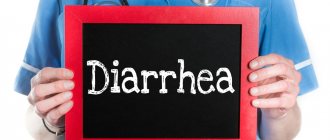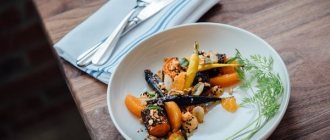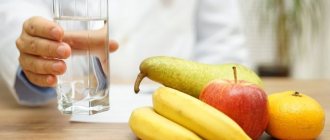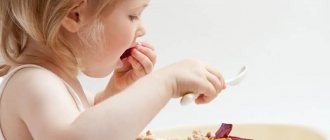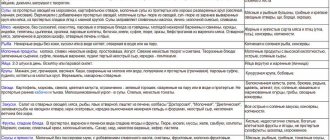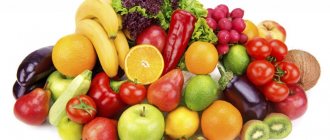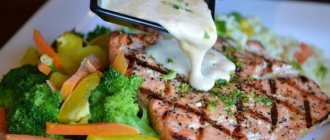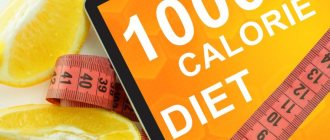With fatty liver, metabolism in hepatocytes is disrupted and lipids accumulate in them. Normally, the tissues of the gland contain 7–14% fat, and in case of disease this figure can reach 45%. The process of fat accumulation is quite long and sometimes even unnoticed by the patient, however, as the pathology progresses, hepatic cell failure develops and dyspeptic disorders occur.
In addition, with alcohol abuse and infections, degenerative and necrotic processes begin in hepatocytes, which lead to liver cirrhosis. Fatty hepatosis is considered a reversible disease (until the transformation of the structure of the liver lobules has begun), therefore, with timely and adequate treatment, it is possible to reduce the amount of lipids in the tissues of the gland.
A diet for fatty liver is prescribed to all patients. The diet contains the required amount of complete proteins and vitamins and a reduced amount of fat; lipotropic agents and vitamin B12 are additionally prescribed. For diseases of the hepatobiliary system, diet No. 5 and its variations are indicated.
When choosing a diet, it is important to take into account not only the underlying disease, but also the diseases that developed against its background. The clinical picture of fatty hepatosis is similar to the manifestations of many diseases of the liver, pancreas, intestines or stomach, therefore nutritional therapy is prescribed after diagnosis. The doctor will tell the patient what a particular patient can eat after studying the medical history and conducting the necessary examination.
Causes of fatty liver
Although modern experts cannot name the exact cause of the disease, they say that the development and occurrence of the disease is influenced by a number of factors, including:
- Excess weight;
- Lack of protein in the body;
- Diseases associated with the endocrine system;
- Diabetes mellitus type II. Statistics indicate that hepatosis most often affects elderly people with hyperlipidemia and metabolic syndrome disorders;
- Presence of gastrointestinal diseases. Fatty liver is often accompanied by pancreatitis;
- Rapid weight loss. With accelerated weight loss, the liver does not have time to remove fat cells and some of them, without having time to oxidize, are deposited on the liver;
- Hormonal therapy;
- Excessive alcohol consumption.
A doctor will help you find out more precisely the cause of the disease.
Products recommended for consumption
It is necessary to take care to enrich the daily diet with products that contain large amounts of methionine, inositol, betanyl and choline. These substances help enhance the synthesis of lecithin in the liver tissue. Fiber and pectins can improve digestion.
Best suited for daily use:
- Dietary types of fish and meat, steamed, boiled or baked in the oven. Each patient must take care of his health, so it is better to give preference to products purchased on the market. The fact is that chickens that are raised in mass production also contain traces of antibiotics and hormones that promote the growth of muscle mass in the bird and put a strain on the human liver.
- Vegetable oils (no more than 40 g per day);
- Fresh vegetables and fruits;
- Seafood;
- Low-fat dairy and fermented milk products;
- Egg white;
- Cereals;
- Dried fruits, honey and biscuits.
You should always remember that the liver is a kind of cleansing filter for our body, so any disturbances in its functioning do not have the best effect on the functioning of other organs and systems. If you have a history of fatty hepatosis, then you need to approach this diagnosis with all caution and follow absolutely all the doctor’s recommendations on nutrition. It is protecting the liver from the attack of saturated fats that will help prevent further progression of this pathology.
Rules and principles of diet
Treatment of hepatosis begins with eliminating or correcting the causes that led to the disease. The diet for fatty liver and other diseases of the hepatobiliary system was developed by Russian nutritionist M.I. Pevzner and is called “table number 5.”
The basic principle of dietary nutrition for illnesses is to exclude fried, fatty and cholesterol-rich foods, while maintaining the nutritional value of the food.
According to the plan of table number five, a patient weighing 75-80 kg should consume per day:
- at least 100 grams of protein;
- about 60-80 grams of fat;
- about 300 grams of carbohydrates, of which only 50 grams can be simple;
- It is recommended to drink about 1.5 liters of fluid per day;
- consume no more than 5-7 grams of salt.
The main focus should be on protein intake, since a study conducted by Pevzner showed that it accelerates repair processes in the liver.
Very often, with liver diseases, cholesterol metabolism is disrupted, so nutrition for fatty liver includes fruits and vegetables rich in fiber.
During the diet, it is additionally necessary to consume vitamins and microelements. Vitamin B12 and niacin are especially important.
In more detail about how to eat if you have a fatty liver: meals should be divided, designed for 5-6 meals with a gap of three hours. Dishes must be warm. Preference should be given to the following cooking methods: boiling, baking, steaming.
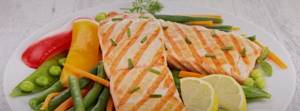
Nutrition Strategies for Children
| Age | Calories | Fluid intake |
| 1 year | 900 kcal/day | 1100-1200 ml/day |
| 2-3 years | 1000 kcal/day | 1300 ml/day |
| 4-8 years | 1200 kcal/day for girls 1400 kcal/day for boys | 1600 ml/day |
| 9-13 years | 1600 kcal/day for girls 1800 kcal/day for boys | 1900 ml/day for girls 2100 ml/day for boys |
| 14-18 years old | 1800 kcal/day for girls 2200 kcal/day for boys | 2000 ml/day for girls; 2600 ml/day for boys |
| Age | Number of fruits | Number of vegetables |
| 1 year | 1 cup per day (250 ml) | ¾ cup per day |
| 2-3 years | 1 cup | 1 cup |
| 4-8 years | 1.5 cups | 1 cup for girls; 1.5 cups for boys; |
| 9-13 years | 1.5 cups | 2 cups for girls; 2.5 cups for boys; |
| 14-18 years old | 1.5 cups for girls; 2 cups for boys; | 2.5 cups for girls; 3 cups for boys; |
What can you do on a diet?
What can you eat on a diet for fatty liver? The answer to this question is simple: everything that is useful. Here are the foods allowed for fatty liver:
- Dried white bread;
- Vegetable and dairy soups;
- Porridge from any cereals with water or with a little milk added;
- Steamed protein omelettes;
- Low fat dairy products;
- The cheese is not salty or spicy;
- Pasta;
- Lean fish;
- Lean types of meat (chicken, turkey);
- Boiled potatoes;
- From fruits: apples, pomegranates, bananas;
- Boiled egg;
- A little butter;
- Carrots, beets, broccoli;
- Honey;
- Greenery;
- Not sour fruits and berries;
- Pastila and marmalade;
- Sugar in small quantities;
- Sunflower or olive oil;
- Drinks: compote, jelly, apple juice, fruit drink, weak teas.
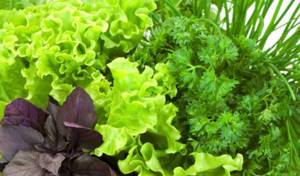
General information
The organs of the hepatobiliary tract are directly involved in digestion, as well as in other important physiological processes. The system is a complex mechanism that is responsible for the functions of removing metabolic products, detoxification, and the formation of immune reactions.
The main component of the structure is the liver. This is the central organ of the tract, the main task of which is to produce biologically active substances. These include bile acids, enzymes, hormones, glycogen, and blood cells.
In addition, fat and protein metabolism occurs in the tissues of the gland, the residual products of which are cholesterol, urea, and amino acids. The functions of the liver include detoxification of the blood and elimination of poisons through bile. Inside the organ there is an accumulation of substances that, if necessary, are broken down to produce energy.
What can't you do on a diet?
Nutrition for fatty liver and pancreatic diseases are largely similar. It excludes the use of the following products:
- Fresh flour products: rolls, puff pastries, croissants;
- Milk and dark chocolate;
- Cocoa;
- Smoked products
- Fatty meats and fish;
- Soups with fatty broth;
- Sausage;
- Canned food;
- Sour fruits: oranges, grapefruits, cranberries, green apples, tangerines, kiwi;
- Pickled vegetables;
- Garlic, green onions and onions;
- Mushrooms;
- Mayonnaise, horseradish, mustard, wasabi and all hot sauces;
- Lentils, beans;
- Spices;
- Coffee;
- Strong tea;
- Soda;
- Alcohol.

Prohibited Products
During the treatment of fatty hepatosis, the following products from the usual diet are vetoed:
- Alcohol;
- Strong coffee, tea and cocoa;
- Meat broths, as they enhance the secretion of gastric juice;
- Fatty types of meat (pork, lamb, etc.);
- Fatty fish;
- Fresh white bread, muffins, pancakes, pancakes, etc.;
- Animal fats, namely: lard, margarine;
- Fatty sauces, for example, mayonnaise;
- Sausages, wieners and frankfurters;
- Smoked and overly salted meat;
- Pickles and canned foods;
- Fatty desserts: cakes and pastries;
- Hotter seasonings;
- Any concentrated food additives: store-bought seasonings containing flavor enhancers, “bouillon cubes”, etc.
Menu for the week
The table shows the diet for fatty liver - menu for the week:
| Day | Eating | Sample menu |
| Monday | Breakfast | Cheese sandwich, oatmeal with water, green tea |
| Lunch | Baked apple | |
| Dinner | Meatballs with steamed rice, jelly | |
| Afternoon snack | A glass of low-fat milk, savory cookies | |
| Dinner | Boiled egg, vinaigrette, weak tea | |
| Breakfast | 100-150 grams of low-fat cottage cheese, pear juice | |
| Tuesday | Lunch | Banana milkshake |
| Dinner | Baked beef (150-180 grams), buckwheat, compote | |
| Afternoon snack | Salad of grated carrots, seasoned with a teaspoon of low-fat sour cream | |
| Dinner | Chicken breast, boiled rice 150 grams, green tea | |
| Wednesday | Breakfast | Coffee with milk without sugar, a piece of marshmallow, a plate of semolina porridge with fruit |
| Lunch | Vanilla pudding, tea | |
| Dinner | Beef broth, salad with cucumbers and herbs | |
| Afternoon snack | Low-fat yoghurt with muesli | |
| Dinner | Chicken breast, beet and prune salad, glass of mineral water | |
| Thursday | Breakfast | Steamed omelette 150 -170 grams, tea |
| Lunch | Fruit puree 100 grams | |
| Dinner | Pasta with minced chicken (180 grams), glass of mineral water | |
| Afternoon snack | Yogurt (glass) | |
| Dinner | Cheese soup with croutons (130-150 grams), compote | |
| Friday | Breakfast | Milk-rice porridge 140-150 grams, tea |
| Lunch | Strawberry smoothie, glass | |
| Dinner | Rice soup, boiled beef (180 grams) | |
| Afternoon snack | Cheesecake 1 piece, glass of juice | |
| Dinner | Iceberg salad dressed with a spoon of low-fat sour cream (150-180 grams), a glass of mineral water without gas | |
| Saturday | Breakfast | Cheesecakes with raisins 100-150 grams, tea |
| Lunch | 80-100 grams of marmalade | |
| Dinner | Baked turkey, vegetable side dish, compote | |
| Afternoon snack | Kefir, apple | |
| Dinner | Steamed beef cutlets, Greek salad | |
| Sunday | Breakfast | Vegetable omelette 180 grams, compote |
| Lunch | Kissel, dried fruits | |
| Dinner | Steamed fish, vegetable salad (150 grams), tea | |
| Afternoon snack | Rice pudding 100-130 grams | |
| Dinner | Potato casserole 150 grams, cucumber, tea or compote |
You might be interested in the article - How to create a varied menu on the 5p table diet?
Description of the disease
Diffuse hepatosis is a pathological process against which lipids accumulate in the tissues of the gland. In medicine, this disorder is often called non-alcoholic fatty disease. With this disease, healthy cells are replaced by inclusions. Subsequently, fibrosis forms between the affected areas, and subsequently the functionality of the organ decreases, which leads to the development of failure. The main factors provoking pathology include:
- Diabetes.
- Obesity.
- Steatohepatitis.
- Poor nutrition.
- Old age in women.
- Drinking alcoholic beverages.
- The influence of toxins.
- Kidney damage.
- Diseases of the pancreas (in particular pancreatitis).
- Disturbances in the outflow of bile (dyskinesia).
- Long-term use of medications.
Dish recipes
Recipes for dishes on the liver diet will help add variety to the patient’s diet. Several interesting recipes confirm this:
- Steamed vegetable omelette. This dish requires boiling, but you can replace it by placing the ingredients in a bag and throwing them into a pan with boiling water. For the vegetable omelet you will need:
- cauliflower;
- zucchini;
- green pea;
- two eggs.
Zucchini and cauliflower are finely chopped and mixed with eggs and peas. Cook for five minutes in a double boiler, in a bag and pan - 3 minutes.
- Beef cooked in the oven. Cut the beef into thin slices. Grate with basil. Cut the carrots. Take a deep bowl, place the meat, add carrots on top, add a little salt and leave to marinate. After this, put in the oven for an hour, cook at 180 degrees until golden brown.
- Hake baked in an omelette. To prepare you will need:
- hake carcass;
- two pieces of eggs;
- a glass of milk;
- flour two tablespoons;
- 1 tablespoon sunflower oil;
- salt, dill - to taste.
Clean and wash the fish. Grease with salt, dill and oil. Leave to marinate. At the same time, beat the eggs in a bowl until smooth. Grease a baking dish with sunflower oil, pour in the eggs, add flour and add the fish. Preheat the oven to 180 degrees and bake the hake.
- Homemade marmalade. To prepare you will need a kilogram of apples and pears, 400 grams of sugar. Peel the fruits and chop finely. Place in a saucepan, add water and simmer over low heat until the apples and pears are soft. Afterwards, drain the water through a sieve and wipe the fruit. Place the pulp back into the pan, add 400 grams of sugar and cook until thickened. Pour the resulting mixture into a mold, cool in the refrigerator and cut into pieces.

Basic principles
The diet for fatty liver hepatosis is based on several rules. Due to this, the main goals of nutrition correction are achieved and a therapeutic effect is exerted on the organ. Main principles:
- Fractionation (the patient eats food in small portions 6-8 times a day).
- The daily amount of calories is from 1200 to 2500 (the diet should ensure weight loss, not weight gain).
- The daily fat intake does not exceed 60 g.
- The diet is based on first and second courses.
- Adequate drinking regime (from 2 liters of liquid daily).
- Food is prepared by baking and steaming.
- Daily protein intake is 110-130 g.
- Carbohydrate consumption – 250-300 g.
It is recommended to include fats and proteins of both animal and plant origin in the diet. At the same time, you need to eat taking into account the compatibility of foods, so as not to overload the gastrointestinal tract.
